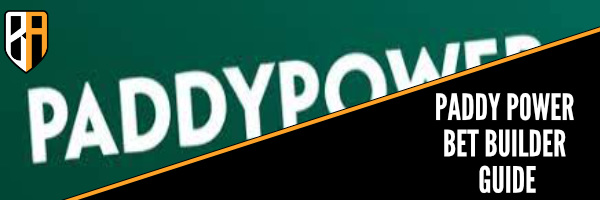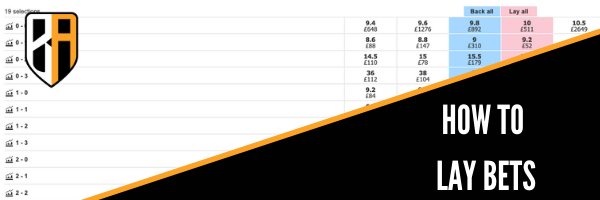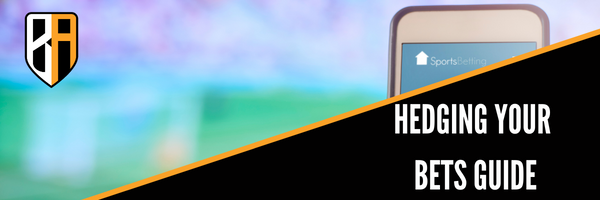Commercial Information
If you sign up for an account through one of the links on this page we may receive a commission from them for this. This does not effect our rankings and there are some sites we do not receive a commission from. All our reviews are independently written. you can read our full affiliate policy below.
18+ | commercial content | begambleaware.org
Note: 18+ Only, terms and conditions apply to all offers, subject to withdrawal at any time. For help and advice on responsible gambling please see begambleaware.org.
We have a long experience fo using dutch bets on exchanges. Our main focus is usually on the winners of major tournaments but the same principle can be used in correct score betting, football betting, golf and horse racing among other sports.
How to Dutch bets
A Dutch bet is also commonly referred to as “dutching”.
Tournament Dutching Example
For this example, I’m going to use a fictitious World Cup outright market. You’ll need access to the Betfair Exchange app to be able to place the multi-backed dutch bets.
Here are the 4 favourites for for in the winners market
- Spain 7.8
- Germany 7.6
- Brazil 4.1
- Argentina 6.2
I think it’s quite likely the winner will come from these four.
Now we will need to calculate the stake to get a level return.
On my desktop, I use the ARB crunchers multi-back calculator (Click here to visit) or the dutching app calculator on my phone. All I need to do is add the prices to the calculator and set your back amount, this can be seen in the image below.
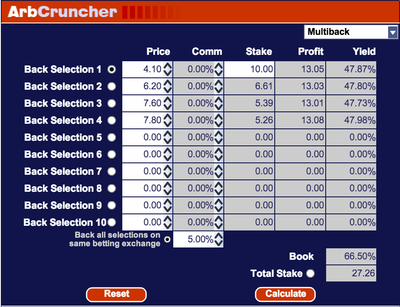
This image is using Betfair as the price guide and it includes the 5% commission on each of the bets. As you can see from the image we have a total stake of £27.26 and a total return of between £13.01 & £13.08 as long as one of the four wins. This means a 47% profit and is the equivalent of backing these four teams to win at 1.47.
You can set your stake on any of the selections. Alternatively, you can use the radio button by total stake and set your overall stake there.
As a note, this is not the same as hedging bets, although it is similar. You can read my guide to hedging bets here.
Correct Score Dutching
You will find lots of options that you can dutch bets on. The correct score market is very popular. This is usually done on a betting exchange as it is one of the best cash-out betting sites on the market.
Low scoring example
For this example, I’m using an international friendly between the USA and England. It could be a very tame drab affair so I’m covering 0-0, 1-0, and 0-1. Here’s how it looks on arb cruncher
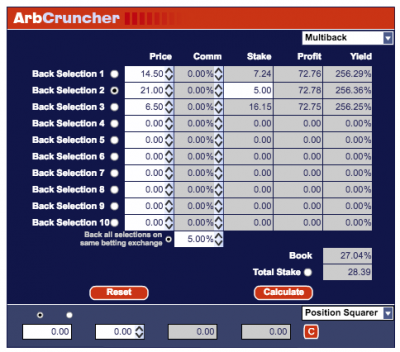
I now take these stakes and put them into Betfair as the 3 amounts for each outcome. This makes the market look like this –
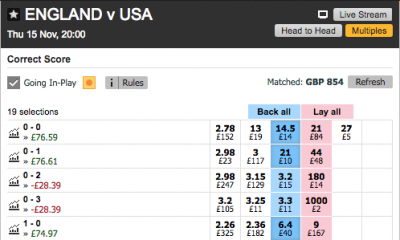
As you can see above there is a very similar profit on all 3 outcomes and the same loss, £28.39, on all other results – which is the total stake. As an alternative, you can also check other exchange apps to see if there is any difference in the price.
This kind of Dutch offers a trading option where you can lay off 0-0 later in the game to boost the other profits or negate the losses. If you trade it well you can be in a position of having your stake back and a profit on any goals. If you are new to dutching it is advisable to start with small stakes to learn how the trades go.
It can also be used to cover popular scores to get better odds than both teams to score in some cases such as covering 1-1, 2-1, 1-2 and possibly 2-2.
Both teams to score dutching example
Here’s an example from Liverpool v Spurs
Both teams to score odds = 1.72
Covering 1-1 (8.4), 2-1 (9.8), 1-2 (16.5) – this gives a 238% return or odds of 2.38 and can present you with some good options to trade too. It’s possible to lay off some of the 1-1 or other odds to get a bigger return.
You can even add in further scores 3-1 (16.5) and 1-3 (42) to cover more scores and still get odds of 1.65, although this is slightly less than both teams to score bet this can present you with a better trading position if there are early goals in the game.
As always there’s no such thing as a no-risk bet and with this correct score strategy then you still have scores that you lose on, 2-2 for example. The other major risk for this type of trading is quick early goals, if Liverpool scored 3 in the first 15 minutes it would mess up the odds and make it difficult to trade.
High Goal Scoring Example
If you are looking to trade then dutching a game where goals are expected can be a profitable approach. By covering more high scores we can look to trade on early goals.
In this example, I’m going to look at Brazil v Uruguay. There is, in my opinion, a good chance that both teams will score in this match. I’m going to cover 2-2, 3-2, and 3-2. In this trade, I do not need to get the score right to make a profit due to the margins on offer.
Current odds
- 2-2 – 32
- 3-2 – 55
- 2-3 – 190
I take these odds and again put them into Arb Cruncher.
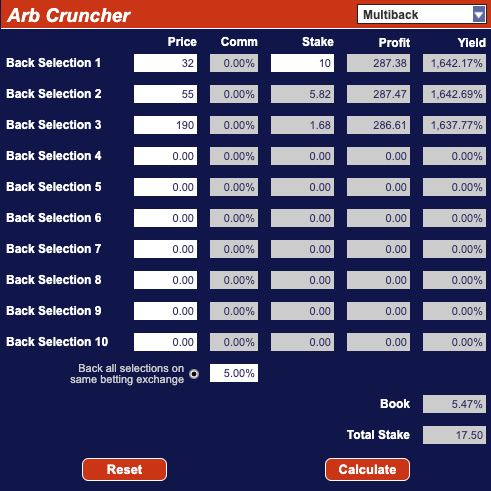
This shows that there is a £287 profit if any of these 3 scores lands from my £17.50 total stake.
As the match goes on then and the goal start coming, hopefully, these odds will get lower allowing us to trade out for a part profit or hold on for a full profit. This is down to your own personal preference and strategy. If the odds move early there is a good chance to take your stake back and let the rest run, again this is entirely down to personal choice.
Dutching results can be profitable over time but take some time to learn and hone your skills. Remember, Leicester won the league one season and they would never have been in a title dutch at all!
For me, dutching is a much more sophisticated way of trading. I personally prefer the long-term markets of the European Championships or the World Cup. You can play these as the odds move over time once you are an experienced trader. I would recommend starting with small stakes, or on paper, and building your knowledge up. Follow the stats and not what you think will happen!
Simon Taylor
Tweet


